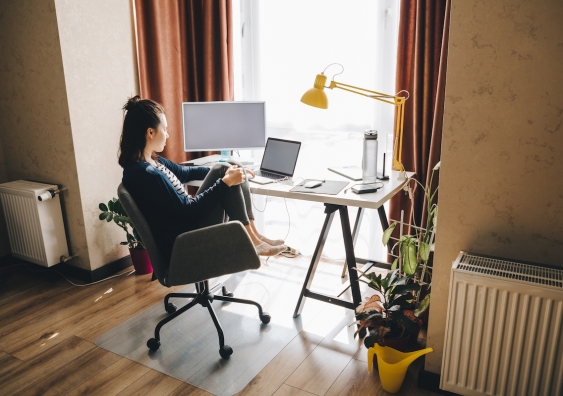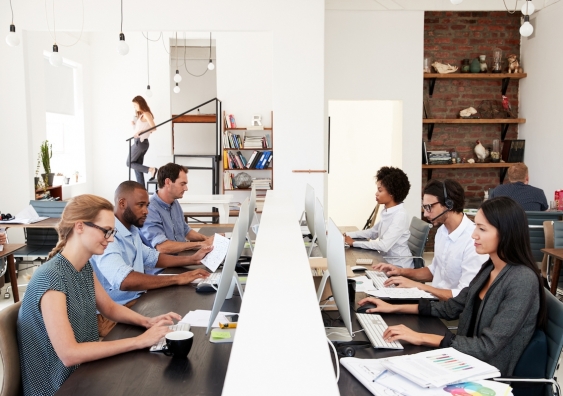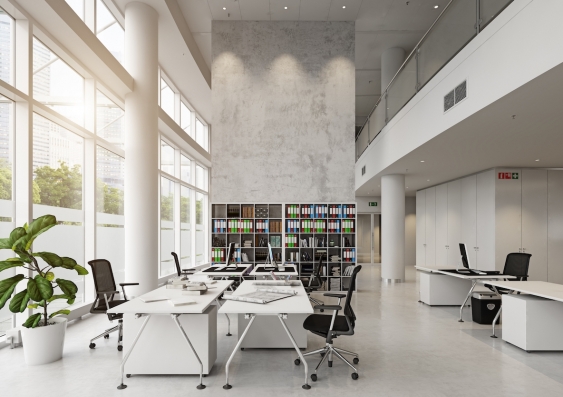Work from home if you can – that has been the message from governments attempting to curb the spread of the coronavirus. And while companies worldwide were forced into standing up their workforce remotely, it may work so well that many will consider making it permanent.
The success of working from home will mark the end of the office, at least the way we remember it, according to interior architect Iva Durakovic, who says that remote working might become the new norm.
“We already saw this idea of a distributed workforce getting stronger, and this will only accelerate it. And for a lot of businesses with knowledge workers, I certainly think that’s going to be the shift.”
Working from home is the new normal
The Associate Lecturer at UNSW Built Environment believes that remote working arrangements will continue long after the coronavirus pandemic has passed and will also change the nature of office spaces for the better.
She says that widespread working from home is shaking up the role of the traditional workplace and highlighting what is truly valuable.
“It will break down what we need to come to a traditional workplace for, like face-to-face contact, and the way the future work environment looks. And it will be very different.”
She says that working from home can be a win-win for both companies and employees.
“I think that organisational trust is being tested in a positive way and they [will] realise that we can do it. It gives us a lot more autonomy and responsibility for our work which is a good thing for productivity,” she says.
“Organisations who have maybe struggled in the past with trusting [that] their employees, [even] if they’re not in the building, will still get their work done, [will see] that they’re accountable. That teams will manage to function and communicate effectively, even if they’re not in the same room.”

Working from home can be a “win-win” for companies and employees.
She says another obvious benefit is the hours saved each day on commuting.
“If we can at least reduce the number of times that we need to go into the office, if not completely, it will free up productive time that we could [use] working without having that stress of the commute, [or] that we can get back for ourselves so that we have more of a work-life balance.
“I think we’re going to get to a place where we’ve got sort of distributed hubs in neighbourhoods or communities, and a central place to come to that means people won’t have to do the exhausting commute every day.”
The end of open-plan offices?
The Associate Lecturer says that it could also mark the end of common open-plan office resistance.
“One of the most common dissatisfactions reported with open-plan or agile or activity-based work environments is issues of privacy and distraction, but also the ability to personalise your space,” she says.
“We’re in a unique position in that we are in our own home environment and we have to make our space work for us. At the moment, we have full control over that.
“We are entirely in our own space, so we have this autonomy over our work, meeting our deliverables, how we structure our work, and the environment that we do that in.”

More individual work done remotely will likely change open-plan office layouts.
She says that “working from home may successfully do what activity-based working models try to do.”
“You might be answering emails quickly on the kitchen bench because you need to do something else, whereas you might go to a quiet place and sit down at a desk to write a report for four hours. So, we’re personalising a work environment for the particular task that we need to do more instinctively.”
She says that if the arrangement is to remain long-term, workers must optimise their space and behaviours for boundaries between work and home.
“It can work if there’s a little bit of a blend. But research has shown that if the work starts to take over the home it’s a disaster,” she says. “Conversely, if the home and the distraction starts to take over work, it’s just unsustainable.”
A successful working-from-home setup:
- Ensure you have adequate lighting of your workspace
- Where possible work in a room with a view – we are subconsciously wired to nature and the mental benefits of looking at a natural landscape, even briefly, are well documented
- Set up your monitors to ensure a safe distance to avoid eye strain
- Save your posture and consider a desk space over your couch or bed for any task requiring longer than 1 hour
- Schedule time away from your screens
Ms Durakovic says that while home-offices may not be equipped yet to support a full-time long-term transition, companies and workers will continue to improve home-office standards, with new home-office design standards emerging along the way.
“We have standards and expectations of what the indoor environment quality needs to be to support worker well-being, satisfaction and productivity in the office, and this will be no different.
“Right now, we’re in a crisis, and so we haven’t had any change management – we don’t have time for it – we’ve just done it. It’s taken a lot of those layers of red tape and decision-making out of the equation, so companies are just investing upfront and as they go to make it work,” she says.
Downsizing office space
However, she says that even if working from home becomes the primary way of working, the office won’t be going away for good.
“The biggest threat to working from home at the moment is not deadlines or productivity. It’s the isolation and our mental health,” she says.
“We will definitely still need a home base, a connection point to come to and see our colleagues, connect to our professional communities [and] a workplace can provide [that], but it might be a lot smaller. It might be very different in terms of its technology and purpose.
“The focused individual work that you would have done at your desk in the office, maybe that stays at home … but it certainly challenges whether the individual desk exists at all in that centralised workplace going forward.”
She also says that while there’s no denying the coronavirus has had a huge financial impact on the design field, designers and architects are extremely resilient and will continue to adapt.
“The work will come back, and we need to wait it out and support them,” she says.
She says that more permanent remote working will have particular implications for the design field.
“I think the workflow, it will shift into maybe a blended typology, whereas before you might have purely been doing say residential design, well now, you might be doing a bit more of a mix.”

Offices are unlikely to disappear completely, but they could become smaller as people work from home.
She says that design companies may also adopt design-specific co-working spaces, which will drive knowledge share and exchange, and collaborations and innovation.
“What might be a future scenario is that design firms start doing the same sort of thing with other consultancies. Or, you might even start to see firms that have long-standing clients grouping together for that centralised space and then everything else happens at home.”
She says the downscaling of the workspace will have significant implications on the commercial real estate industry.
“Large corporations and companies – they’re never going to let go of an office or headquarters completely – but they will need less space, and commercial real estate will need to be more flexible with that.
“We have already seen seismic shifts towards Space as a Service (SPaaS) models as a result of the gig economy with increased demands for lease flexibility and better alignment between workspace and contemporary ways of working. They’re now going to have to get even more creative with how they can multi-purpose certain areas of buildings, be more flexible in the leasing terms and costs to make that work for them financially.”














